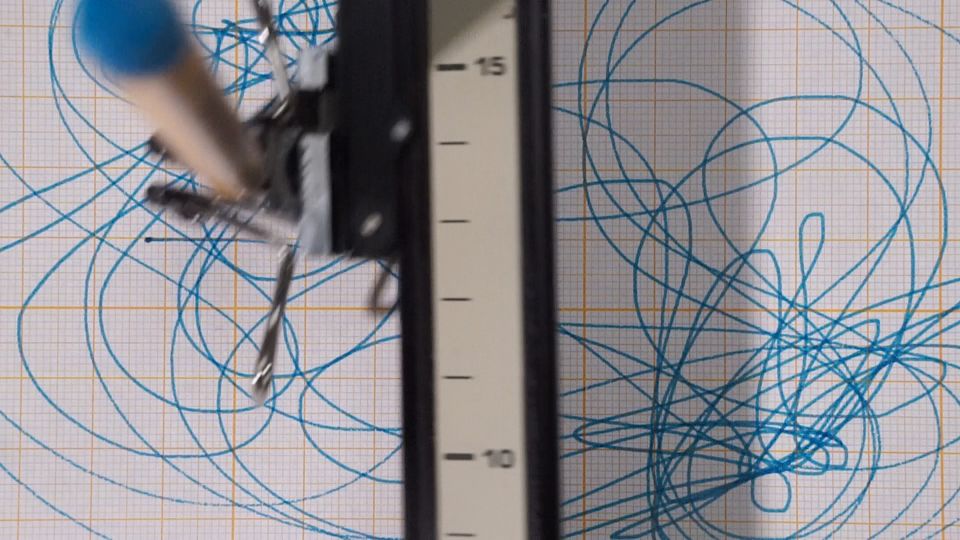
Mechanisms Common to Disparate Phenomena: #59
"It has been several years since many people began to give me credit for discovering chaos."
27 November, 1961. Yoshisuke Ueda discovers deterministic chaos through his computing systems while the Cold War is at its peak. It's a ground-breaking interaction between man and machine, an interaction that fascinates Dutch researcher and artist Joost Rekveld, who has dedicated his life and work to uncover what humans can learn from dialogues with machines - machines that mankind has constructed. In a form of media archeology, Rekveld investigates material engagement with devices from forgotten corners in the history of science and technology. The outcomes of the investigations often take the shape of abstract films that function like alien phenomenologies.
Rekveld's latest experimental endeavour plays like a thrilling science-fiction film somewhere between a human fever dream and lively machinic chaos. Starting with the origins of chaos, it evolves into a dance between sound, image, and politically informed narrative. Most computing technology was, after all, a repercussion of the rapid development of atomic weapons and planetary surveillance systems. #59 is entirely composed of images produced and analogue electronic signals. These signals were generated using period equipment, including early oscillators. It's only logical then that Rekveld credits his machines, from an EAI TR-48 analogue computer to an Astro VG-854 video generator.
Mechanisms Common to Disparate Phenomena #59 might be indebted to the structures of experimental cinema, but its imagery is real machinal output. Looking at the experiences shared by humans and electronic circuits, Joost Rekveld's film is an accumulation of flashes, shapes, fractals, crystals, waves and more. It's akin to calligraphy but made with early technology. On the soundtrack, Rekveld ironically (and fittingly) places dialogues from classic sci-fi films such as Plan 9 from Outer Space and War of the Satellites. #59 is a cinematic meditation on material processes and the arrow of time.


